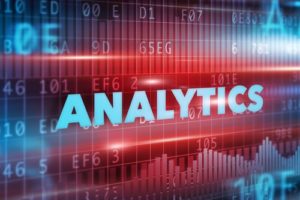Global Legal Analytics Market: Improved Decision Making
Legal analytics is redefining the future of legal practice, which will help assist the decision-makers and strategist in effective legal decision-making. It will help in analyzing the history and behavior of clients, prospects, and other valuable insights with the assistance of booming technologies like Big Data and artificial intelligence. Moreover, data-driven decision-making that is invoking demand for automation in legal analytics coupled with the increasing productivity and law firm profits are the major factors likely to push the global legal analytics market towards high growth in the coming years.
Legal analytics involves mining data contained in case documents and docket entries, and then aggregate that data to provide previously unknowable insights into the behavior of the individuals such as judges and lawyers, organizations like parties, courts, law firms and the subjects of lawsuits (patents) that populate the litigation ecosystem. Litigators use legal analytics to reveal trends and patterns in past litigation that inform legal strategy and anticipate outcomes in current cases.
Product Overview
Legal analytics is the management process of extracting actionable knowledge from data to assist in-house legal leaders and decision-makers on topics of diverse matter by focusing on forecasting, process improvement, comparative legal costs, billing optimization, resource management, legal strategy and financial operations.
Legal department leaders recognize that data and analytics can be a powerful tool and sustainable source of competitive advantage. Currently, new data sources are being combined with advanced analytics, which require both innovation and a willingness to experiment. Legal leaders can now incorporate critical data they hadn’t previously used in decision making.
Capturing, interpreting (both structured and non-structured data), analyzing, and managing legal data requires both experience and unique capabilities. Legal analytics methodologies provide insights into more effective approaches by saving legal departments time and money. Powerful insights that would have stayed unknown years ago are now be uncovered with powerful legal analytical new tools.
Global Analytics Market: Overview
The global legal analytics market is projected to grow Around USD1.8 Million by 2022, at a CAGR of 32.7% during the forecast period. The growing demand for automation in legal analytics for data-driven decision-making, increase in productivity and revenue of law firms are some of the major factors driving the market.
The legal analytics market has been segmented on the basis of analytics type, case type, component, deployment model, end user, and region. Based on component, the market has been further classified into solution and services. The services segment is anticipated to grow at the highest CAGR during the forecast period. Based on analytics type, the market has been segmented into descriptive analytics, prescriptive analytics, and predictive analytics. The descriptive analytics segment is expected to lead the market during the forecast period.
Based on deployment model, the market has been divided into on-premises and on-demand. The on-demand segment is expected to grow at the highest CAGR over the forecast period. Based on end user, the market has been segmented into law firms, corporates, and others. Based on case type, the market has been segmented into commercial case management, intellectual property management, antitrust management & Others.
Factors that may restrain the growth of the legal analytics market include lack of awareness and understanding about legal analytics. Most small and medium-sized law firms are unaware about legal analytics solutions and continue approach traditional methodology for effective decision-making. Additionally, several law school firms are unware about the functioning and benefits of legal analytics solutions. Thereby, both enterprises and law firms need to be updated about legal analytics and its benefits.
Competitive Advantage
In any competitive environment such as business, sports, finance if you have better information about the opposition than they have about you, you hold a distinct advantage.
Until now, to get insights into the behavior of specific attorneys, firms, judges, or parties, litigators have had to rely on querying colleagues who may have personally dealt with them in the past. But such anecdotal data, or “anecdata,” often relies on a small sample size. It may well be misleading and is unlikely to provide a complete, accurate picture.
Legal analytics gives litigators an advantage against opposing counsel by providing data-driven insights into how attorneys, judges and parties have behaved in similar cases in the past, and how they are likely to behave in similar cases in the future. Lawyers can build litigation strategies informed by that information.
Predict Outcomes and Replicate Successful Strategies
While technology cannot flawlessly predict the outcome of a particular case, it can provide insights that increase the odds of an accurate prediction, enabling its users to pursue an accurate litigation strategy that is more likely to succeed.
For example, a litigator represents a client in a securities case, and also can determine which motions or different tactics, which have been most successful in other securities cases tried by the same judge, it would be reasonable to predict that similar motions or strategies could be successful in the current case. The attorney still needs complete command of the relevant law, which traditional legal research provides, to set and execute the right strategy. But the outcomes of these motions or tactics are not quantified in the documents accessible via legal research, so there is no way to uncover these insights using traditional tools.
Conclusion
Legal work requires being able to identify and recognize patterns in data quickly and efficiently. As datasets continue to grow in size and type, it is going to become more important to have a variety of tools that allow for the user to manipulate and visual the data. The practitioner will still have to apply his or her judgment to the matter and confirm the accuracy of the information; these tools enhance the practitioner’s other legal skills.



